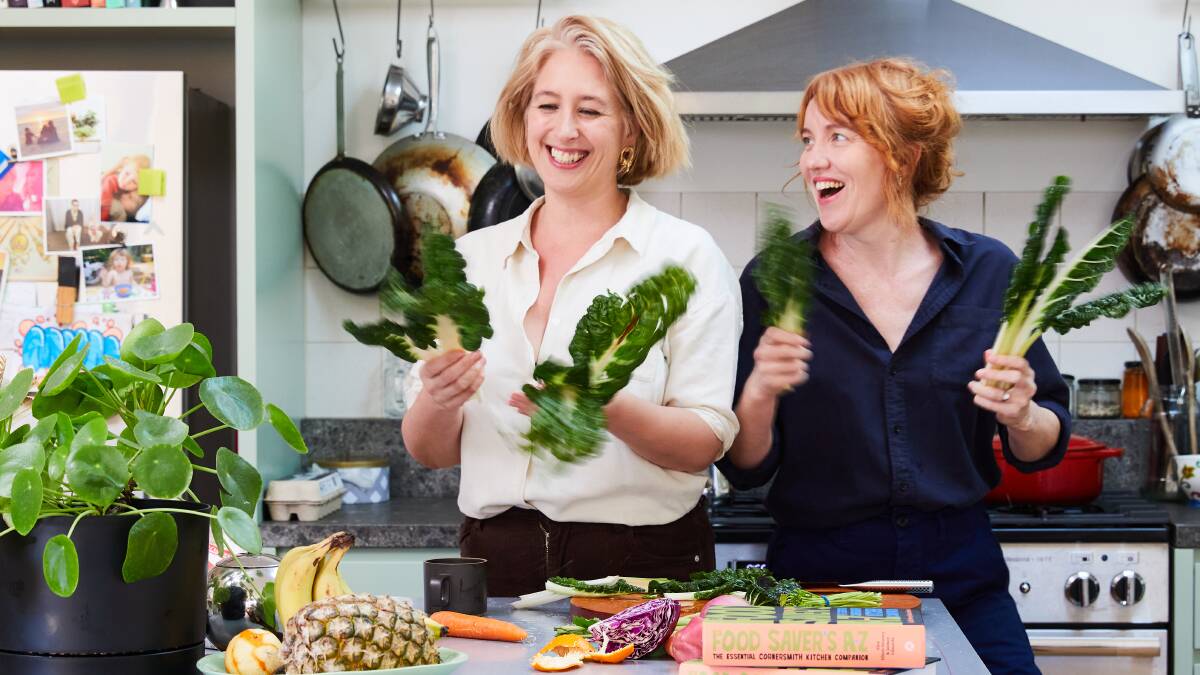
I've come to the conclusion that I probably don't need to go grocery shopping for the next three months. At least.
Subscribe now for unlimited access.
or signup to continue reading
My pantry is full of cans of coconut milk and diced tomatoes; there are 17,000 types of rice, or is it risoni?; jars of caramelised onions and nut butter; bags of red lentils and green split peas.
I know there are prawns and fish fillets in the freezer, alongside chicken marylands and portioned bags of mince; a loaf of stale bread waiting to be turned into breadcrumbs; and pastry sheets.
But each week I throw out an avocado, watch green beans grow mouldy, occasionally I'll tip the remains of a bottle of milk down the drain after it's turned and don't even get me started on the bunches of coriander that have found their final resting place in the bin.
According to the Department of Climate Change, Energy, the Environment and Water, every Australian throws out about 312kg of food each year, that's every one in five bags of groceries, or $2000 to $2500 per household a year.
As inflation continues to rise we're being warned that grocery bills will keep rising, they're up 5.5 per cent over the year according to the latest Australian Bureau of Statistics figures.
Fruit and vegetable prices are on the increase due to weather extremes and increases in fuel costs.
If we're looking to save money (and do our bit for all the environmental costs of food waste - If food waste was a country, it would be the third biggest emitter of greenhouse gases after the United States of America and China) here's one quick solution.
Go and buy The Food Saver's A-Z: The essential Cornersmith kitchen companion.

About two years ago, I recommended you go and buy their book Use It All: The Cornersmith guide to a more sustainable kitchen. If you did that, and have adapted at least some of their ideas, you're probably well on your way to making some changes.
This new book will take it to the next level.
Authors Alex Elliott-Howery and Jaimee Edwards run the Cornersmith Cooking School in Sydney's Annandale, teaching traditional cooking skills to modern cooks, highlighting the importance of seasonal eating and reducing food waste. Their mission is to empower home cooks to make less wasteful, more delicious meals every day.
"What we're interested in is helping people change their habits in the kitchen," says Elliott-Howery.
"It's not about picking up a cookbook, even though we write cookbooks and want people to buy cookbooks, it's about looking in your fridge, in your pantry, in your fruit bowl to get inspiration, rather than finding the recipe first."
She says while The Food Saver's A-Z is an extension of Use It All, it's more than that. It's an encyclopedia of sorts, a reference guide if you like, packed with waste hacks, storage tips, swaps and shortcuts for more than 150 common vegetables, fruits and kitchen staples, as well as hundreds of suggested recipes.
"We want people to look in the fridge and see a handful of green beans, turn to green beans, and get a few ideas, and they're gone."
So before mine grow mouldy I might think of roasting them with some garlic and cheese, or turn them into a curry with that can of coconut milk.
I'm also mixing that last bit of miso paste with the last bit of mayonnaise to flavour things up; making the spring greens medley with the last of the salad bag; and scraping out all the relish and chutney jars to add to a meatloaf with some of that mince in the freezer.
At just more than 500 pages, there'll be something in the book for everyone, for every corner of the pantry, but don't be expecting glamorous photographs of each dish. Some photos were taken for promotional purposes but Elliott-Howery says showing how it should look was never the point. She and I agree that a lot of cookbooks, too many, fill us with inspiration, aspiration even, but don't teach us a lot about cooking.
"That's why we chose to have no pictures in this book, which was a brave move given we live in such a visual time with social media and the like," she says.
"It doesn't actually matter what it looks like, you need to use stuff up, you need to make something that satisfies you, there needs to be a bit of enjoyment in making it and that's what we want you to get out of it.
"It's kind of more knowledge based, I guess, full of simple ingredients that you'll find in general households. We're not asking you to drive across town to get some dried limes or whatever."
Rather than think of our week's worth of meals where Tuesday might be Thai, then Mexican on Thursday, she says, "make it the week of the cauliflower".
"If the cauliflowers look good at the supermarket that week buy a whole one, don't be depressed about it, find ways to use the entire ingredient before you start filling up the fridge again. It's about cooking with what's in season, with what you already have, and making it simple, delicious and interesting."
She says they did consult some old-school cookbooks when they were putting this one together. Books where there were less step-by-step methods and just basic instructions on how to do something. She agrees a lot of these ideas have been around for a long time but we've lost sight of them as times have changed.
"But we've got to take the nostalgia out of it to some extent. It's not doing something cute that your nanna used to do just to be cool.
"It makes sense in our busy, urban, complicated lives.
"Jaimee and I are both working full-time, raising kids, getting home late and getting dinner on the table, packing lunch boxes like everyone else.
"But the future really needs to look different in our kitchens, we have to make changes, I hope this book gets people thinking."
- The Food Saver's A-Z by Alex Elliott-Howery and Jaimee Edwards. Murdoch Books, $49.99.
Spring greens medley
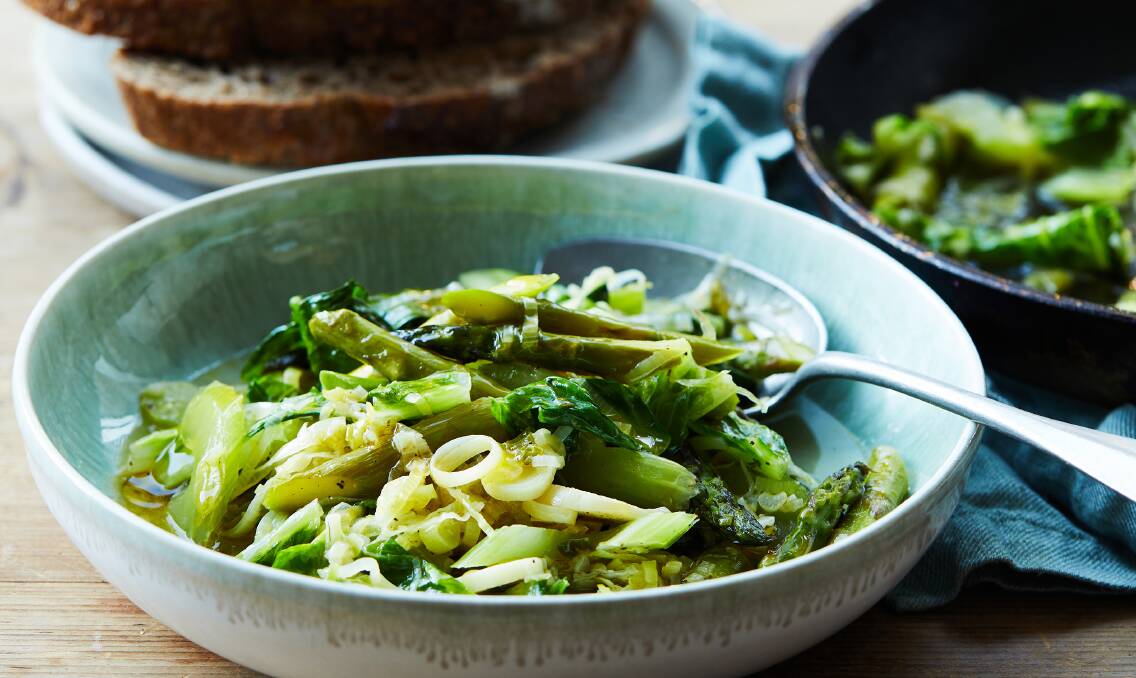
This is a clean-out-the-fridge recipe to use during spring, when all the greens you bought have a short lifespan but you went out for dinner two nights in a row. Use all those greens here - peas, snow peas (mange tout), lettuce, asparagus, silverbeet (Swiss chard), baby spinach, watercress, broccoli florets, chopped green beans. It's light, clean and a perfect springtime meal. Serve as a side with a baked fish, a roast chicken, a frittata or Green Things Fritters.
You'll need 500g of any spring greens, so get out the scales and empty out the crisper. Thinly slice lettuce, spinach or silverbeet and cut asparagus into bite-sized pieces.
Heat 60ml extra virgin olive oil in a frying pan over low heat, then sauté half a diced brown onion, half a sliced leek or two to three sliced spring onions for two to three minutes, then add three sliced garlic cloves. Add the greens, a generous pinch of salt and 125ml water, stock or white wine. Simmer gently, covered, for five to 15 minutes, until everything is cooked. Taste and adjust the seasoning with salt and a good grind of black pepper. Transfer to a serving plate, drizzle with a little more oil and top with any chopped herbs that need using. You could also crumble some goat's cheese and/or shave some parmesan on top.
Serves 4.
Green things fritters
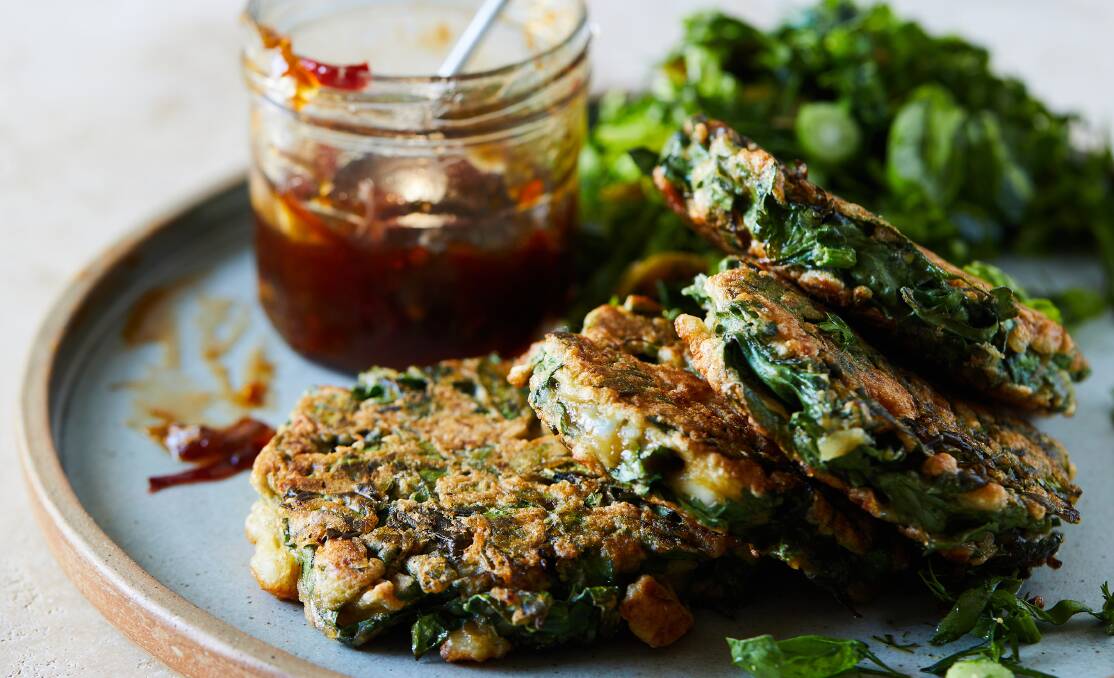
Long live the fritter. Could there be a more forgiving and useful trick up your sleeve? When in doubt, make fritters. When the fridge needs a clear out, make fritters. When the vegie patch is looking like it could do with a tidy-up, make fritters. Here's a green fritter recipe for all of the above. Use spinach, silverbeet, zucchini, kale, celery leaves, peas, herbs, or a mix of what you have.
Finely chop 1 bunch (about 350g) spinach. You can include the stems, but make sure to chop them small (you'll need about three firmly packed cups in all). Put the spinach (or other greens) in a bowl with one cup picked fresh herbs of your choice, half cup grated or crumbled cheese (haloumi and strained feta cheese work well), 35g plain flour and three eggs beaten with half teaspoon salt. Mix all the ingredients very well. Heat two tablespoons of oil in a frying pan over medium-high heat and pour in half cupfuls of the green mix, cooking two to three fritters at a time for three minutes on each side.
Serve the fritters warm, but they're also great the next day for a packed lunch.
Makes 5-6.
Odd-knobs ginger paste
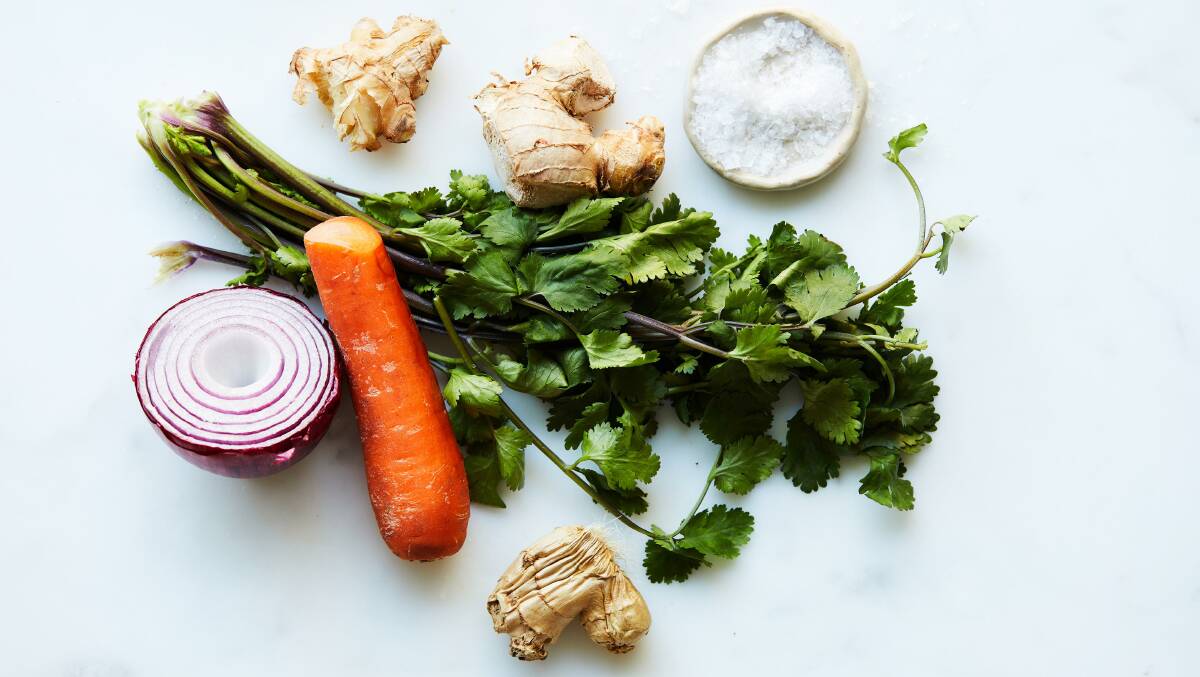
This little recipe is indispensable for using up kitchen scraps. It packs a punch and can be used as the base for a curry or laksa, stirred into yoghurt for a quick marinade, or added to a noodle dish or fried rice.
Gather up all those old knobs of ginger, wash them (don't bother peeling unless they're really old and gnarly) and throw them into a food processor with a bit of garlic, onion, chilli, carrot, celery and herb stems. You want about 200g of ingredients all up, so make up this amount with whatever you have. Give it a good blitz then add two teaspoons of salt and blitz again to make a paste. Transfer to a clean and dry container and keep refrigerated for up to one month. You could add a layer of neutral oil on the surface to help the ginger paste last even longer, about two months in the fridge.
Next time you sauté onions, add one to two tablespoons ginger paste and let your tastebuds sing.
Makes about 1 cup.
Oven-baked ratatouille for wrinkly summer vegetables
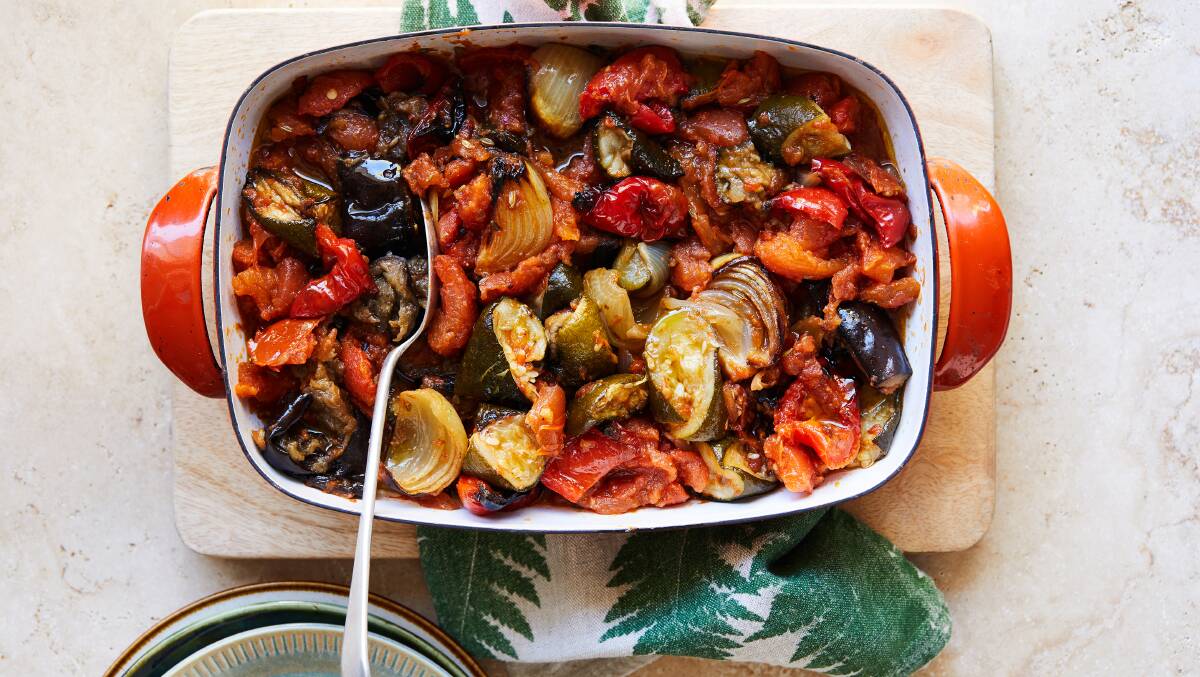
When the garden or fridge is full of ageing summer vegetables, make ratatouille. This oven-baked version chars the vegetables first to intensify their flavour - and the high heat will hide all the vegetables' imperfections. Serve ratatouille with eggs, stirred through pasta, with sausages, on toast or with grilled fish.
Preheat the oven to 200C. In a roasting tin, put 1kg roughly chopped summer vegetables - a mix of zucchini, eggplant, capsicum and red or brown onion. Drizzle 60ml olive oil over everything and sprinkle with salt, then roast for 30-40 minutes, until soft and starting to char on the edges.
Meanwhile, lightly oil four large tomatoes (about 650g) and place in a separate roasting tin. Add to the oven and blacken for about 30 minutes. Once they're jumping out of their skins, remove from the oven and allow to cool a little.
Reduce the oven temperature to 180C. Roughly chop the tomatoes, remove any big bits of tough skin or core, and add to the charred vegetables with two teaspoons crushed coriander seeds or crushed fennel seeds, half teaspoon of salt, lots of ground black pepper and another two tablespoons of oil. Mix everything together and return to the oven for 15-30 minutes, depending on how tender you like your ratatouille. Taste and add more salt and pepper if needed. Serve hot or cold.
Serves 4-6.


